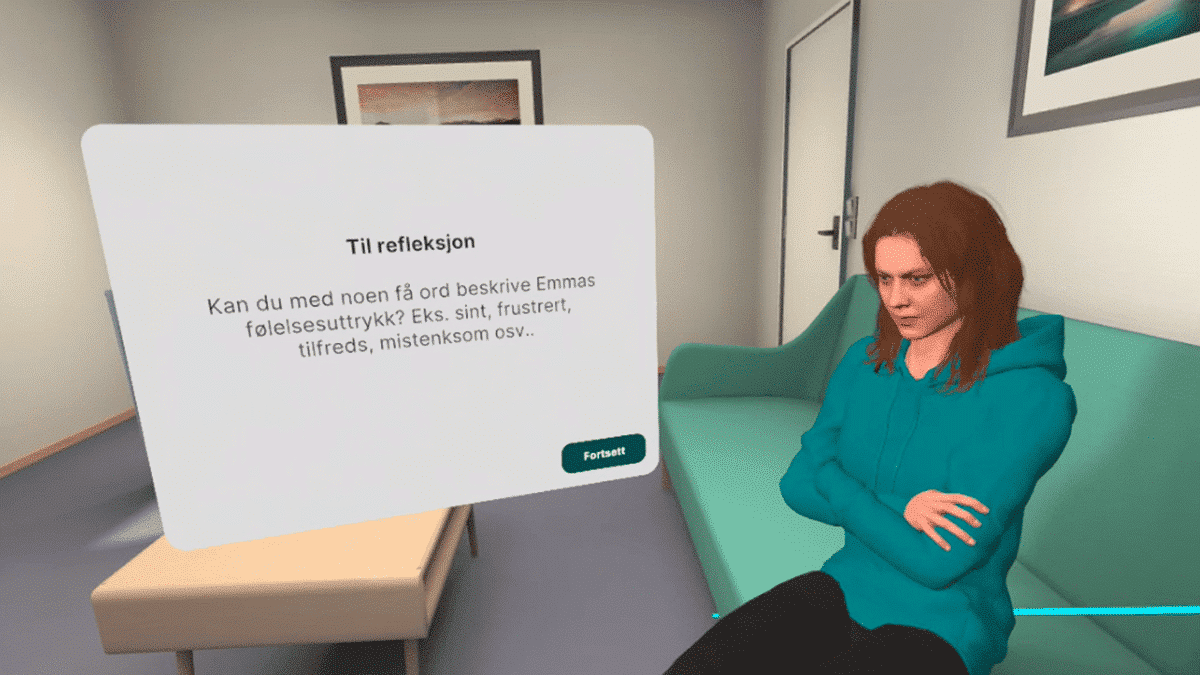Together with Attensi, EGGS helped develop the next-generation training for mental health professionals and students. Learn more.

Together with Attensi and St. Olav’s University Hospital, EGGS has helped develop the next-generation training for mental health professionals and students. The innovation partnership has delivered a pilot VR solution demonstrating how staff can train clinical observation without practicing on actual patients.

Article originally posted on EggsDesign.
In 2021, St. Olav’s University Hospital received a 7.9 million NOK grant from Innovation Norway, which they invested in an innovation partnership with Attensi and EGGS Design to explore simulation-based training solutions. EGGS has contributed with service design, stakeholder facilitation, and user insight work. A year later, the pilot is ready.
A well-known problem within mental healthcare training is the difficulty of getting adequate training for staff dealing with patients in acute situations. Practicing on patients in vulnerable conditions is risky and puts both patients and staff in challenging situations. A VR (Virtual Reality) simulator enables healthcare staff and students to practice meeting patients in vulnerable mental states without consequences from potential mistakes. Moreover, the VR tool enables staff to practice and become more aligned in the words they use. This will help patients to get the right treatment and make it easier for patients to be treated by different staff members.
“EGGS has played an essential role in this project. They’ve brought a structured approach to focusing on the users, as well as facilitating the co-creative process.”
Erlend Thorup
Project Manager | Public Private Innovation Partnership | St. Olav’s Hospital
Developing a tool for a complex challenge like training healthcare staff requires extensive user involvement and alignment with stakeholders to get it right. We have collaborated closely with medical experts such as psychiatrists, psychologists, social workers, and other healthcare staff, as well as students and university teachers, to bring user insights and test the solution. Moreover, we have focused on ensuring that the different stakeholders – representatives from the hospital and the municipality, health care professionals, and university staff – are aligned regarding the goals, direction, and practical use of the project through facilitation and continuous involvement in the process.
The avatars speak and express themselves just like actual patients, which puts high demands on animations to imitate facial expressions, movements, and speech. To make the training realistic, simulations are built with voice control, forcing the users to say the right things with the appropriate tone of voice to the ‘patient’ to get the desired result.
A pilot has just been conducted in three different clinics, where insight on the practical usage of the tool was gathered. The next step is to explore what institutions would like to invest in the solution to create further content and build up a library of different scenarios that can help healthcare professionals to train for all kinds of difficult situations.